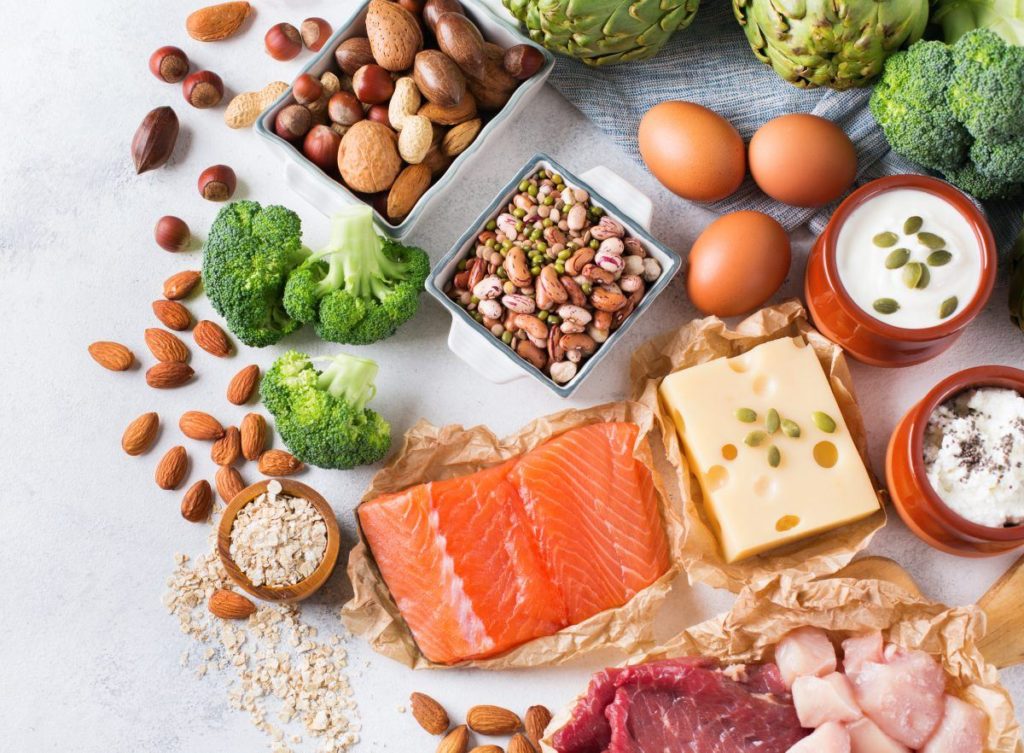
Proteins are among the essential nutrients our body needs to be healthy. Found in every cell in the body, they are used to make muscles, tendons, organs, skin, hormones, enzymes, and various other stuff that serve important functions. They also aid in the growth, maintenance, and repair of body tissues. You could say that proteins are essentially the main building blocks of the body. As such, you really should make sure that you are getting enough. The recommend daily intake is 0.8 grams of protein per kilogram of body weight (0.36 grams per pound). Take note that though there’s a recommended amount, you really need depends on factors such as activity level, age, muscle mass, workout goals, and current health state.
How Much Protein?
There are methods you can use to determine how much protein you need. Most common is to either identify a percentage of total daily calories or target a specific number of grams to consume per day. You can also figure it out based on your lean body mass.
Daily Calorie Percentage
It is suggested adults should consume between 10% and 35% of their total calories from protein. Now, if you want to get your number and track your intake, it’s important that you know how many calories you consume per day. Note that if you want to maintain a healthy weight, then consume approx. the same amount of calories you burn each day. Once you figure out the amount of calories you consume, multiply that by 10% and 35% to get your range. Take for example someone on a 2000 calorie diet: that person would have to consume 200-700 calories per day from protein.
Grams per Day
To target a specific number of protein grams per day, one simple way is to convert the percent range into grams. Since each gram of protein contains four calories, just divide the calorie ranges by four. So for example, that 200-700 calories per day mentioned earlier would translate to 50-175 grams of protein.
Lean Body Mass Method
Lean body mass is the amount of body weight that is not fat, like bone, water, muscles, organs, other tissues and such. The easiest way to calculate this is to subtract body fat from total body mass. So first, you need to know your body fat percentage, then convert total body fat in pounds. To do that, multiply your body weight by the body fat percentage. As an example, those who weigh 150 pounds with 30% body fat would have 45 pounds of body fat. (150 x 30% = 45) then subtract that from total body weight to get the lean body mass. Using the earlier example, the LBM would be 105 (150-45 = 105). Now, to determine your daily need using the lean body mass, multiply your LBM by the appropriate activity level as shown below:
- Sedentary (physically inactive) – multiply by 0.5
- Light Activity (like walking, gardening and such) – multiply by 0.6
- Moderate (30 min moderate activity, 3x a week) – multiply by 0.7
- Active (1-hour exercise, 5x a week) – multiply by 0.8
- Very Active (10-20 hours’ exercise, weekly) – multiply by 0.9
- Athlete (over 20 hours’ exercise, weekly) – multiply by 1.0
So, if we apply this method to the example given earlier, someone who weighs 150 pounds with an LBM of 105 would need to take between 53 grams (sedentary) to 120 grams (athletic) of protein daily.
Protein Sources

You can get protein from plant and animal sources, so if you eat the right kinds of food, then your protein needs will be met. But if you are working out or participating in athletics or other intense activities, then your protein requirement will increase. So if you are not getting enough from food, you can take protein powders.
Meat and Seafood – lean meat, poultry, fish, seafood, eggs and dairy products are all good sources of protein. To minimize added fat, it is recommended that they be grilled or roasted.
Plant-Based Protein – when it comes to plants, the good sources of protein include legumes, nuts, seeds, grains, and vegetables like spinach or kale. As much as possible, choose recipes and cooking methods that preserve their nutritional benefits.
Protein Powders – these are helpful for when you are not getting enough protein from your diet. There are many types, but these three are the most common and popular in the market:
- Whey Protein – this is a mixture of proteins isolated from whey, the liquid part which remains after curdling and straining milk. It is the most popular and cheapest option. It has lactose though, so if you are lactose intolerant, best search for alternatives.
- Egg protein – found in eggs processed into powdered form, a great alternative to whey for the lactose intolerant
- Soy Protein – the other popular one, often found in shakes and soy milk.
Protein is needed by the body for various important reasons and functions. Make sure that you are getting enough, by eating the right stuff. And if you decide to take protein powders, just take the recommended amount.
For more healthy lifestyle, you may also click here!


Reading your article helped me a lot and I agree with you. But I still have some doubts, can you clarify for me? I’ll keep an eye out for your answers.